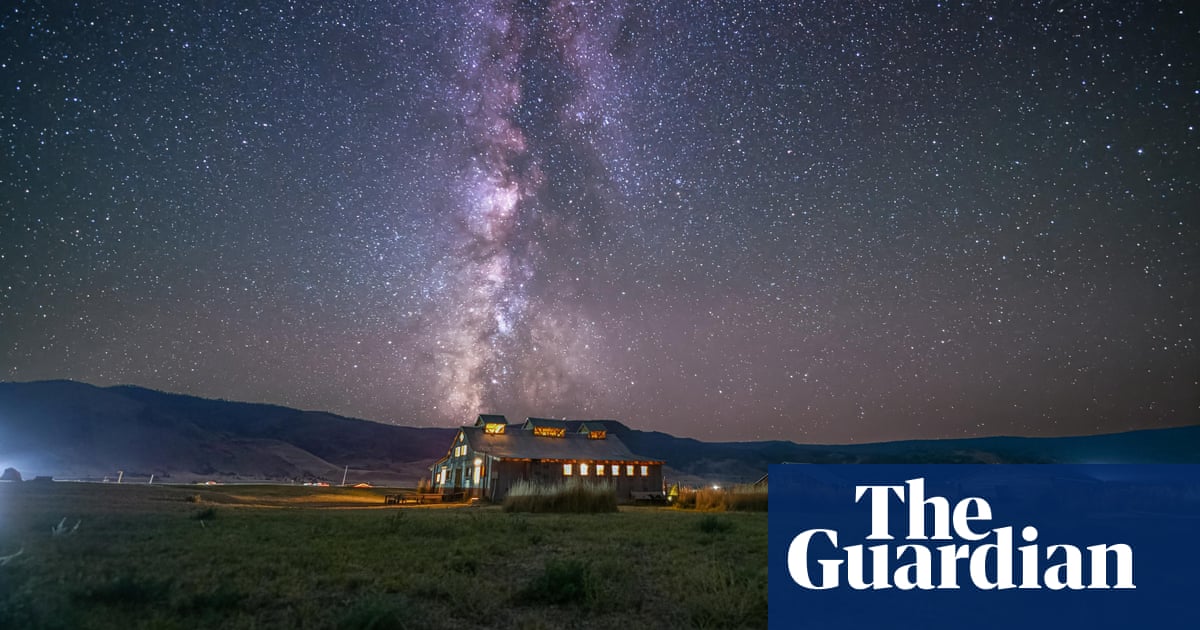Stargazer’s paradise: Oregon area named world’s largest dark sky sanctuary | Oregon


With clear skies and sparse trees, the Oregon outback has long been regarded as a stargazers’ paradise. Now the region is home to the world’s largest dark sky sanctuary, offering pristine views of the night sky across 2.5m acres.
The Oregon outback international dark sky sanctuary received the certification this week, becoming the largest of 19 sites around the world with the same designation. The sanctuary covers Lake county in south-eastern Oregon, a remote area roughly half the size of New Jersey, and could eventually expand to include more than 11m acres.
The region’s skies are already among the darkest in the world, according to a statement from DarkSky International, and the certification will ensure the area remains protected.
“As the population of Oregon and the trend of light pollution continue to rise, the unparalleled scale and quality of the outback’s dark skies will long serve as a starry refuge for people and wildlife alike,” said Dawn Nilson, an environmental consultant who authored the area’s application for the certification.
The high-desert region is also home to one of the oldest known human occupation sites in North America and portions of the Pacific Flyway, a key aerial highway for migratory birds, and is an important habitat for bighorn sheep and sage grouse. Its skies are commonly described as “inky or velvety black”, and the isolation of the region and lack of buildings and power lines often shocks visitors, according to Travel Southern Oregon.
The area is incredibly remote – and stunning, said Bob Hackett, the executive director of Travel Southern Oregon, who helped facilitate the nomination.
“If you drive up, you’re going to be in the middle of 2.5m acres of sagebrush and rock and antelope, and it’s going to be a very remote experience by design. That’s why it’s so dark,” Hackett said.
“It’s surprising sometimes to see that many stars all at once. It catches you and it makes you pause because you feel like you can touch it,” he said. “It’s a very personal experience that most people are going to experience by themselves or with a close friend or family and that’s right. That vastness of the whole cosmos up there – it almost makes you get closer to the people you’re with on the ground.”
Given its remoteness, visitors should be prepared before traveling to the area, he added.
The certification involved a years-long arduous effort by federal, state and local officials, community members and several legal jurisdictions. It required parties to agree to the plan as well as monitor the night sky and institute lighting improvements, DarkSky International said in a statement. Almost 1.7m acres of the sanctuary are overseen by the US Bureau of Land Management.
Tourism officials hope that the designation will help boost tourism in the region in a way that benefits local communities.
“We are going to leave this landscape better for the work that we did and also drive community economic development in a way [communities] choose,” Hackett said.
The Oregon sanctuary is among more than 200 places around the world that have sought to protect the night sky, according to DarkSky International. Other locations include California’s Death Valley, Exmoor national park in the UK and Ainos national park on the Greek island of Kefalonia. The initiative began more than 20 years ago to encourage the protection of dark sites through “effective lighting policies, environmentally responsible outdoor lighting and public education”, according to DarkSky International.
Source link




